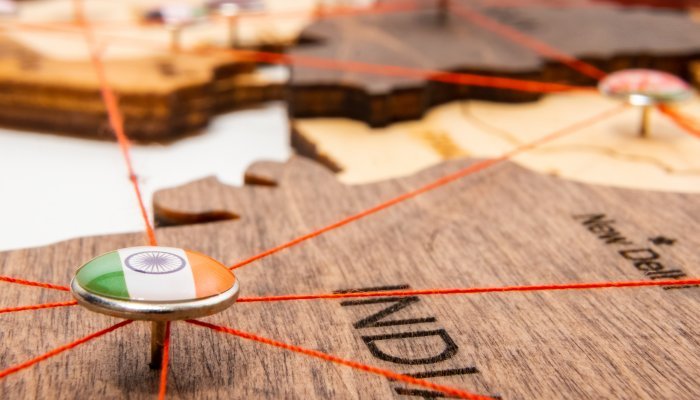India has one-sixth of the world’s people – around 1.4 billion, according to the United Nations. It is now the country with the largest population, and continues to grow. It’s a young population, with a median age of 28.2, who are highly skilled and disciplined. It benefited from inflows of foreign direct investment of $81.97 billion in 2020-21, during Covid, increasing by 23% to $171.84 billion in March 2022.
What’s not to like? And, more to the point, why are South African companies not flocking to the subcontinent?
In truth, overseas expansion is not something to be entered into lightly. Check out the high-profile South African roadkill in Australia. Relatively few South African companies have achieved success beyond our borders. But it seems there are also several myths or preconceptions that are putting South Africans off testing the growing Indian market.
What are they, and are they real? And, to complete the picture, what success levers should South African companies with Indian expansion plans not fail to pull?
Abdullah Verachia, CEO of The Strategists and a GIBS faculty member, has had extensive experience in advising Indian and South African companies. He points out that many of the myths relating to doing business to India are 25 years out of date.
“The old perception that India is somewhat backward as regards infrastructure and faces daunting socio-economic challenges is thoroughly outdated,” he says. “India has made huge strides in terms of fibre networks, electronic voting, mass transit and so on – it’s very much a booming economy.”
Part of the problem could be that many South Africans haven’t yet fully internalised the way in which we have fallen behind. In the past 25-30 years, South Africa Inc has lost its shine as one of the economic leaders of the Global South.
Cutting red tape
One of the most common preconceptions about doing business in India is that it’s very bureaucratic. This is partly true, but in recent years the Indian government has made big strides in simplifying the regulatory environment. By 2020, the country had jumped to 63 from 142 in the World Bank’s Ease of Doing Business Index (the Index has now been discontinued). For example, 39 000 compliances have been reduced and more than 3 400 legal provisions have been decriminalised via the Jan Vishwas Act.
Like South Africa, India was under the sway of Soviet economic ideologies, but the balance-of-payments crisis of 1991 saw a sea change. The government adopted the role of facilitator of business, and the old suspicious neo-colonialist fifth columns were gradually replaced by the realisation that trade and development are actually a source of freedom. At his Independence Day speech from the ramparts of Delhi’s Red Fort in 2019, Prime Minister Narendra Modi spoke of wealth creation as a “great national service… If wealth is not created, wealth cannot be distributed.”
India’s consulates – and South Africa is no exception – are geared towards building business ties, and Invest India is a government-backed entity aimed at promoting investment in the country.
Nonetheless, India remains a highly regulated economy, says David Marshall, group strategy executive at Sanlam (see box). “The regulatory environment is quite fast-moving, so you need to know what you are doing, and have a good relationship with regulators – your Indian partner is vital in this regard,” he says, adding that over the years the regulators have become increasingly sophisticated.
Culture is important – in all senses
Another myth about doing business in India is that the culture, including the business culture, is dauntingly different. There is some truth in this, but the reality is complex. The India-born head of the South African branch of a multinational firm says that one of the things that strikes him is the high prevalence of family businesses in India. The latter are in somewhat short supply in South Africa, with the Oppenheimers, Menells, Hersovs, Saunderses, Ackermans, et al having largely stepped back from running their businesses or even divested entirely.
“A family-owned business has its own distinct priorities and will follow its owner’s agenda,” he says. “You need to build trust with them by buying into their vision – and showing you can make them money!”
The question of trust is a crucial one, to which there is no easy answer. Traditionally, Indian business is not overly legalistic, with deals done personally rather than by teams of lawyers. Although legalism is growing in line with global business practice, personal trust between contracting parties seems to remain an important factor.
One way to build trust is by choosing the right Indian business partner. Most people say that, as in entering any foreign market, finding a suitable Indian partner is vital.
Sanlam’s Marshall says that while one has to go through all the obvious due diligence steps, ultimately the make-or-break factor is how well the two sets of values mesh. Cultural fit is at the top of the M&A checklist for Sanlam which, he points out, has other successful international business ventures.
“You need to have humility, to take the time to understand the other party's viewpoint and to communicate your own clearly,” he says. “Of course, over the years we have had to have difficult conversations, but we've always found that once each party properly understands the other’s thinking, the solutions come quickly because values are aligned.”
Balancing this view of the singularity of the Indian business environment is the fact that these companies, even those ruled by family dynasties, are increasingly global in outlook, and their scions and executives are educated at the same international business schools as their peers.
Opportunity galore
A common misconception is that the Indian ship has sailed. Nothing could be further from the truth. For one thing, says Marshall, the market is huge – and extremely diverse, adds Verachia. Different regions and smaller cities (though they are still large by South African standards) present significant opportunities to build bridgeheads.
“You need to do your homework to understand the different regional dynamics,” Verachia adds. “There are very distinct opportunities also in niche areas.”
One niche opportunity suited to South Africans is the sound and other technologies for big events, such as the Indian Premier League. Another is also retail support. Indian supermarkets have traditionally been mom-and-pop enterprises, with big supermarket chains only now beginning to appear. “South Africa has expertise in the nuts and bolts of sophisticated retail, and companies like Smollan are doing well in India,” Verachia says.
“Although we’ve been here for 20 years and enjoyed success so far, given the opportunities we see, we feel like we have just begun,” Marshall says.
Sanlam’s recipe for Indian success
Sanlam entered the Indian market in 2005, partnering with the Shriram Group, then a highly respected but mid-sized firm. Shriram aims “to serve the common man”, and was active in providing finance for the purchase of second-hand vehicles, seen by its founder as way to drive economic inclusion.
While Sanlam conducted rigorous due diligence on potential partners, ultimately the introduction to Shriram came through mutual contacts. “On paper, we were looking for a company with a reputable owner and leadership, and a strong brand and presence in the financial services market,” Marshall says. “But the cultural fit was the crucial factor.”
That Sanlam was also founded with a purpose – helping Afrikaners deepen their participation in the economy – may have helped.
The partnership started modestly with a joint life insurance venture, followed by general insurance, natural extensions to Shriram’s core business of vehicle finance. Fast forward, and Shriram Life is currently run by a South African, Casparus Kromhout, and is projecting growth of over 30% for the 2024 financial year.
“My golden rule is not to generalise. You’ll know when you get a match in values, that’s the key,” he says. “Partnerships must have cultures that gel together – the rest follows,” Marshall says.
It’s perhaps worth noting that the Shriram Group itself has grown substantially since the Sanlam partnership was inaugurated and has become well diversified. In fact, Shriram Finance Limited recently became part of the Nifty 50, the benchmark index comprising the 50 biggest companies on the Indian stock market. It’s not far-fetched to speculate that the Sanlam partnership played a role in Shriram Group’s tremendous growth.
Prepping for India
Some key points to bear in mind:
- Prioritise cultural fit – look beyond the externalities to find shared values.
- Do your homework. India is many countries in one, and there is more to it than Delhi, Mumbai, and Chennai. Make sure you understand the regulatory environment.
- Look for your niche. For example, FNB started its foray into India as a direct retail bank before switching to the underserved merchant banking and bullion markets. Some of the gaps may be unexpected – who knew that Naas Botha has been coaching the Indian men’s and women’s rugby teams for a few years?







